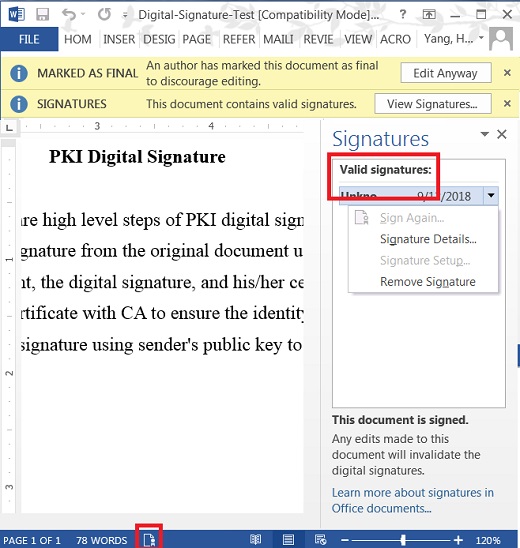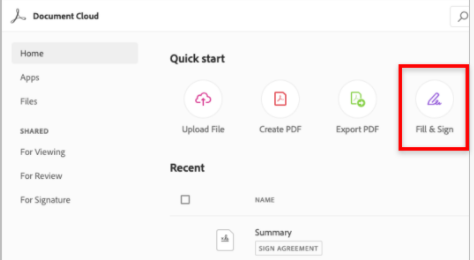

- CREATE A FREE DIGITAL SIGNATURE IN WORD FULL
- CREATE A FREE DIGITAL SIGNATURE IN WORD SOFTWARE
- CREATE A FREE DIGITAL SIGNATURE IN WORD SERIES
A few days later, Vlastimil Klima described an improved algorithm, able to construct MD5 collisions in a few hours on a single notebook computer. The construction included private keys for both public keys. On 1 March 2005, Arjen Lenstra, Xiaoyun Wang, and Benne de Weger demonstrated construction of two X.509 certificates with different public keys and the same MD5 hash value, a demonstrably practical collision. Their analytical attack was reported to take only one hour on an IBM p690 cluster.
CREATE A FREE DIGITAL SIGNATURE IN WORD FULL
MD5CRK ended shortly after 17 August 2004, when collisions for the full MD5 were announced by Xiaoyun Wang, Dengguo Feng, Xuejia Lai, and Hongbo Yu. MD5CRK was a distributed project started in March 2004 to demonstrate that MD5 is practically insecure by finding a collision using a birthday attack. The size of the hash value (128 bits) is small enough to contemplate a birthday attack. While this was not an attack on the full MD5 hash function, it was close enough for cryptographers to recommend switching to a replacement, such as SHA-1 (also compromised) or RIPEMD-160. In 1996, Dobbertin announced a collision of the compression function of MD5 (Dobbertin, 1996).

In 1993, Den Boer and Bosselaers gave an early, although limited, the result of finding a " pseudo-collision" of the MD5 compression function that is, two different initialization vectors that produce an identical digest. ( Hans Dobbertin did indeed later find weaknesses in MD4.) When analytic work indicated that MD5's predecessor MD4 was likely to be insecure, Rivest designed MD5 in 1991 as a secure replacement.
CREATE A FREE DIGITAL SIGNATURE IN WORD SERIES
MD5 is one in a series of message digest algorithms designed by Professor Ronald Rivest of MIT (Rivest, 1992). As of 2019, MD5 continues to be widely used, despite its well-documented weaknesses and deprecation by security experts. The weaknesses of MD5 have been exploited in the field, most infamously by the Flame malware in 2012.
CREATE A FREE DIGITAL SIGNATURE IN WORD SOFTWARE
On 31 December 2008, the CMU Software Engineering Institute concluded that MD5 was essentially "cryptographically broken and unsuitable for further use".

MD5 fails this requirement catastrophically such collisions can be found in seconds on an ordinary home computer. One basic requirement of any cryptographic hash function is that it should be computationally infeasible to find two distinct messages that hash to the same value. MD5 was designed by Ronald Rivest in 1991 to replace an earlier hash function MD4, and was specified in 1992 as RFC 1321. It remains suitable for other non-cryptographic purposes, for example for determining the partition for a particular key in a partitioned database, and may be preferred due to lower computational requirements than more recent Secure Hash Algorithms algorithms. It can still be used as a checksum to verify data integrity, but only against unintentional corruption. Although MD5 was initially designed to be used as a cryptographic hash function, it has been found to suffer from extensive vulnerabilities. The MD5 message-digest algorithm is a cryptographically broken but still widely used hash function producing a 128- bit hash value. MD5 is prone to length extension attacks. This attack runs in less than a second on a regular computer. A 2013 attack by Xie Tao, Fanbao Liu, and Dengguo Feng breaks MD5 collision resistance in 2 18 time.


 0 kommentar(er)
0 kommentar(er)
